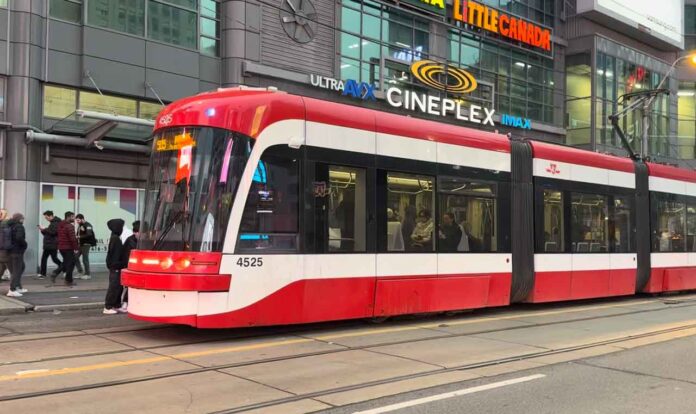Infra
On Eastern Avenue, warehouses and wreckers give way to change
Work continues on the Wonder Lofts, a former bread bakery, on Eastern Avenue that are being transformed into condominiums.Dave LeBlanc/The Globe and Mail
If you wanted your auto wrecked in the 1950s, 60s or 70s, there was no better place than Eastern Avenue.
I should know: My father, Emery, was a master of shortcuts and whenever we had to get downtown quickly, he’d usually scoot down to Eastern and blast across the city on a road that was, then, a bizarre mix of heavy industry, residential and city infrastructure.
Of course, as an east ender, I still use Eastern today. And once in a while, I think about the flattened automobiles stacked like dinner plates over the chain link fences and the patrolling junkyard dogs I’d see from dad’s chocolate-brown Gran Torino. My guess, however, is that if 21st-century Torontonians think of Eastern at all, they associate it with the city’s booming film industry (booming for so long, the first City of Toronto film commissioner, Karen Thorne-Smith, was appointed in 2006).
I decided to walk Eastern between the 1926 railway bridge near Dibble Street all the way to Coxwell Avenue. What remained, I wondered, from when Eastern was at its roughest, toughest and most industrial apex?
But how to pinpoint an apex? Using auto wreckers as a yardstick, my guess is 1970. Checking the Might’s City Directories, I can see the first, Eastern Auto Wreckers, set up shop at No. 852 in 1934, but stood alone for many years. By 1950, they got some company, but it wasn’t until the 1960s that the domino effect occurred. In the 1970 Might’s, there are 10 businesses listed as either auto “wreckers” or “salvage,” and a host of others that do heavy-duty things such as coppersmithing, textile waste, pipe or iron fabrication, batteries, and, of course, the warehousing of bits and bobs (and let’s not forget Brown’s Bread at No. 462, which built their factory in 1920). By 1980, the number of auto wreckers had dwindled to three, possibly four.
Historic street maps show that Eastern Avenue didn’t exist in 1858. Instead, at Trinity Street a road named South Park Street appears between King Street and Palace Street (now Front St. E.); by 1880 however, Eastern has replaced South Park and, by 1924, the little curve west of Leslie Street has replaced a T-bone intersection to create the street we know today.
Speaking of that curve, I began around Marigold Avenue where Eastern is filled with single-family homes. A few steps later, however, and the south side is nothing but weedy, vacant lots. The only building left standing is No. 721, which, in 1970, was home to Canada Metal Co. and Rotocast Ltd. Bronze Castings. As I pass the midcentury modern building owned by Revival Film Studios (No. 629), I note that it was once home to Toronto Iron Works.
Wolf Electric & Lighting Supply, at the south west corner of Eastern and Heward Avenue is interesting. On the north and east façades is a circular blue-and-white tiled logo, “STLtd.” However, when I look that up, I find No. 555 housed Canadian Industries Ltd. (chemicals) for most of its life, and a scan of other years failed to turn up a business beginning with S. At Carlaw Avenue, while the former enamel-panelled Shell service station is no longer pumping gas, it is still fixing cars.
Kitty-corner to that is the much-loved, battle-scarred Gale’s Snack Bar. While it has kept irregular hours for the past few years, it is a true survivor. Feeding generations of workers and locals, the Might’s lists No. 539 as a private residence in 1954 but, in 1955, as Keer’s Snack Bar, owned by Norman Keers, who lived above. In 1964 it changed its name to Grace’s Snack Bar and in 1965 to Gale’s, then run by Delbert Brown. In 1966, the owner is listed as King Sum Chan; today, it is run by Eda Chan, David King Sum Chan’s daughter. A bit droopy, I can’t help but think if the “maximum occupancy” of three diners all sneezed at the same time, the poor building would collapse.
Next is the former Ayre/Simcoe Hotel – home to gay bar “The Toolbox” in the 80s and 90s – at Morse Street (now residential), the former site of the Hells Angels biker club at No. 498, and Brown’s Bread/Weston Bakeries Ltd. at No. 462. More interesting is the tiny “Tasty Restaurant,” across the street from the big bakery. Locked up for at least 15 years, it’s listed in the 1970 directory, and I can just imagine the tinkling of plates and the short-order cook shouting “Order Up!” Across the street and completing my western leg are the impressive Edwardian buildings built by Consumer’s Gas.
Walking east from Marigold, I arrive, finally, at the last vestiges of the auto wrecking years: Hollywood North Used Auto Parts at No. 842 and, next door, Waxman Salvage at No. 854. Neither, however, display stacks of crushed automobiles to impress the 10-year-old in me.
I notice No. 875, which was once Canadian Pipe & Steel (and now Toronto Parks & Forestry’s Machine Shop) and, further on, note that a few of the wreckers listed in the Might’s would’ve been where the enormous Canada Post “South Central” facility parking lot is today.
Past the massive TTC Russell Yard (there since 1913) I wrap up by admiring the 1911 pumping station and, behind it, the accompanying crown-shaped Building T (designed in 1971) which brings a little bit of Brasilia-style modernism to the Coxwell and Eastern area. Across the street, a new, sparkling white residential building will bring 771 units to the area.
In a 1998 issue of Taddle Creek magazine, Alfred Holden wrote about a similar street: “Enterprises, as great as Eastern Airlines or as lowly as a corner store, will often die pathetically, with no ceremony or celebration of their achievements. Dupont Street in Toronto at the close of the 20th century is an open graveyard of such industries, most of which collapsed without so much as a pauper’s funeral. … They are the parking lots, warehouse loft condos and retail joints of the post-industrial age.”
But, like with Mr. Holden’s “Dupont at zenith: an overdue memorial to the forgotten achievements of Toronto’s 20th-century avenue of enterprise” – the inspiration for this column – I hope you, gentle reader, will consider this a celebration of Eastern Avenue’s achievements, along with a hope that the best years are yet to come.










